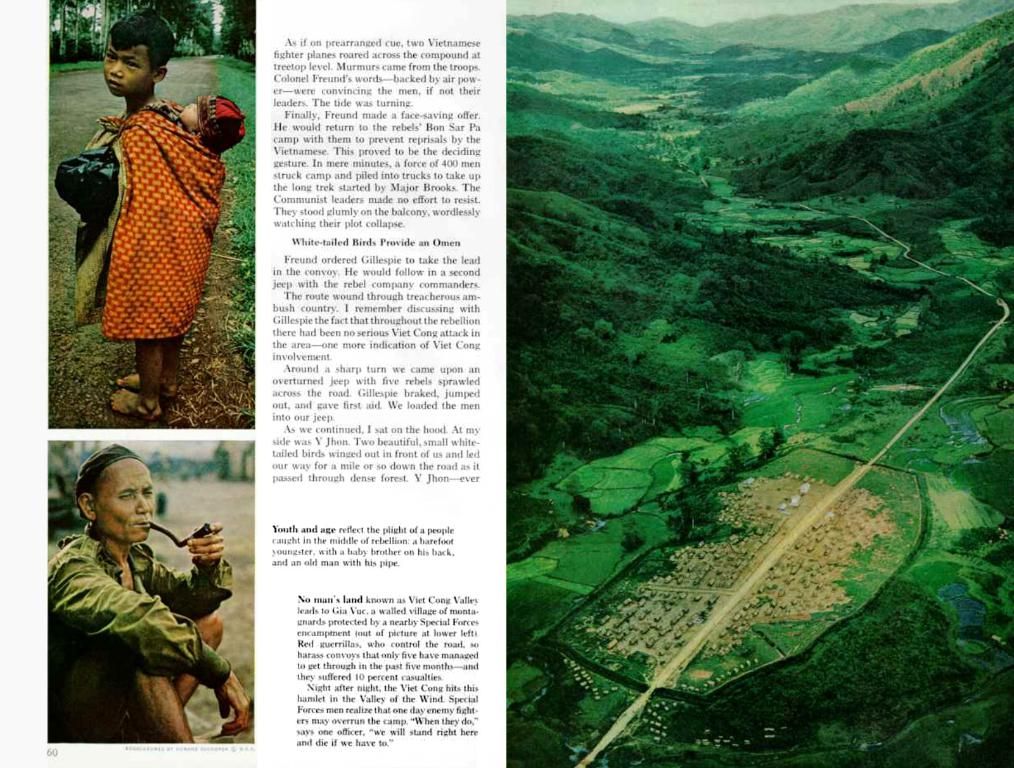Cosmic cartography expansion: James Webb Space Telescope reveals largest universe chart, covering more than 13 billion years
Exploring the Boldest Universe Map Ever Created - A Glimpse into the Infant Universe
Strap in, folks, 'cause we're diving deep!
Science has just taken a giant leap forward, unveiling the most expansive cosmic map yet seen. This bad boy covers a mere sliver of space and stretches across almost all of cosmic time, hosting a whopping 800,000 galaxies! Some of these celestial wonders are so far-flung that they appear as they did in the universe's early days, a staggering 13 billion years ago.
Thхов (June 5), the map's big reveal was orchestrated by the geniuses at the Cosmic Evolution Survey collaboration. This marvel covers a 0.54-degree-squared arc of the sky - more space than the moon displays when viewed from Earth.
To gather this astronomical data, the jet-black James Webb Space Telescope (JWST) gazed upon a region of space christened the COSMOS field for 255 hours. This patch of starlight, devoid of stars, gas clouds, and other space debris, has been scanned with various wavelengths of light using telescopes.
The JWST's surveillance of the COSMOS field has offered an extraordinarily detailed view of the cosmos, peering back as far as 13.5 billion years.
Since the Big Bang, the universe has been expanding, stretching out visible light as it travels across the cosmos. As a result, the light emitted from distant galaxies gets stretched out, transforming into infrared light. JWST was specifically crafted as an extremely sensitive infrared telescope, designed to detect these faint, stretched-out light signals from the universe's infancy. It's already rewriting our understanding of how the cosmos came to be.
"Ever since JWST flicked the switch, we've been wondering 'Is this telescope breakin' the cosmological model?'" said Caitlin Casey, a far-out physics professor at the University of California, Santa Barbara, and co-lead for the COSMOS project.
Here's the eye-popper: With JWST, we're witnessing roughly 10 times more galaxies than anticipated at such distant rectitudes. Moreover, supermassive black holes have been discovered that are hidden from the Hubble telescope.
The raw data from the COSMOS field observations was made publicly accessible soon after its collection by JWST, but it was essentially untouchable for most. Raw data from telescopes like JWST requires handling by tech-savvy folk with powerful computers.
The COSMOS collaboration devoted two years to crafting the map from JWST raw data to make it accessible for amateur astronomers, undergraduate researchers, and space enthusiasts to delve into the universe's heart. Check out the interactive map viewer and explore the cosmos at your own pace!
The James Webb Space Telescope, a remarkable piece of technology, has revolutionized environmental-science and space-and-astronomy by uncovering an unprecedented cosmic map, providing a detailed look into the infant universe and expanding our understanding of the cosmos. With this map, now accessible to amateur astronomers, undergraduate researchers, and space enthusiasts, we are able to delve deeper into the heart of the universe and possibly rewrite the established cosmological model.




